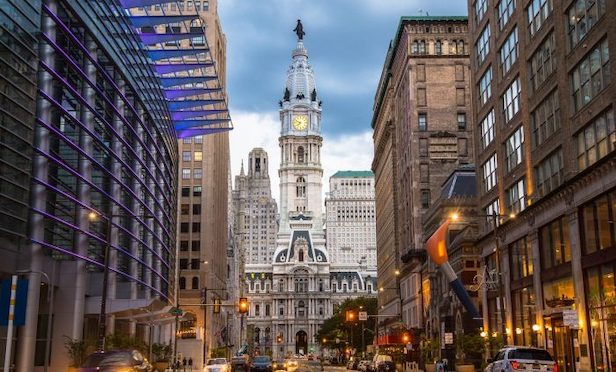 Exacerbating the congestion problem is Philadelphia's growing economy.
Exacerbating the congestion problem is Philadelphia's growing economy.
PHILADELPHIA— The cost of congestion within the Center City street grid has been calculated in millions of hours and thousands of jobs lost and a $260-annual tax on each Philadelphia household.
A recently released report by Philadelphia-based based Econsult Solutions, Inc. found that Center City congestion resulted in 9.7 million annual hours lost for bus and car passengers sitting in traffic; $152 million in annual time value and transportation cost associated with those delays and $21 million in additional SEPTA bus operating costs associated with maintaining the same level of service at slower speeds.
The report also noted that 15,700 potential jobs and $1.08 billion potential earnings were lost due to lost productivity, which Econsult noted amounted to four Comcast Towers worth of unrealized workers.
Another congestion cost to the city was $58 million in city and school district tax revenue lost due to lower productivity and earnings, which calculated out to $100 per household.
The increased congestion in the city comes amidst Philadelphia population and job growth. Philadelphia has grown by more than 71,000 jobs since 2010 and saw a 15,000-jobs increase in 2018 alone.
The report's release comes as the City of Philadelphia, in partnership with SEPTA and the Philadelphia Parking Authority, have launched a campaign to better manage congestion by strictly enforcing traffic violations in Center City.
“Congestion in Philadelphia is negatively impacting the quality of bus service, which in turn is contributing to ridership loss,” says SEPTA general manager Jeffrey D. Knueppel. “Less bus ridership adds even more cars to city streets, further exacerbating the congestion problem. SEPTA is committed to working with the city to break this vicious cycle, and this report helps to make clear just how important it is to the future of the city and region that we are successful in this effort.”
Street use in the city is also on the rise, the report notes. “The city has seen an increase in the number of pedestrians, transit riders, bikers, and drivers of all types that share its colonial street grid,” says Michael A. Carroll, City of Philadelphia deputy managing director of the office of transportation, infrastructure, and sustainability. “At the same time, the emergence of ride-sharing and online shopping with delivery has put new kinds of demand on the grid. The resulting congestion impacts the lives of residents throughout the city, costing them valuable time and limiting their ability to reliably access employment and other opportunities.”
© Touchpoint Markets, All Rights Reserved. Request academic re-use from www.copyright.com. All other uses, submit a request to [email protected]. For more inforrmation visit Asset & Logo Licensing.







